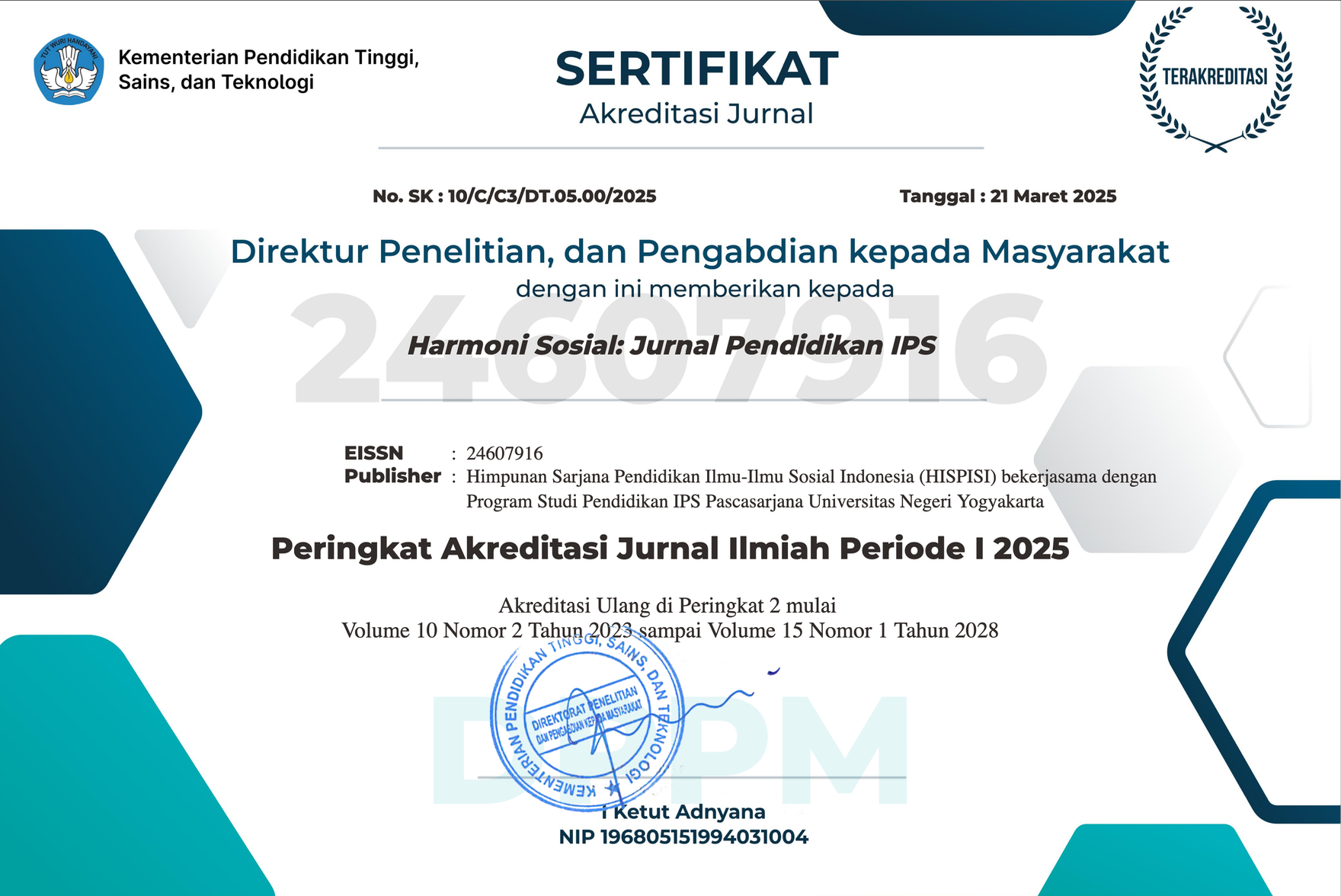Precarious Living: Assessing the disaster risk vulnerability of selected informal settlers in Dasmarinas City, Philippines
Downloads
Downloads
Aliu, I. R., Akoteyon, I. S., & Soladoye, O. (2021). Living on the margins: Socio-spatial characterization of residential and water deprivations in Lagos informal settlements, Nigeria. Habitat International, 107, 102293. https://doi.org/10.1016/j.habitatint.2020.102293
Apilado-Cañete, P. R. F. (2007). Place making and the politics of identity in a resettlement site in Dasmariñas, Cavite. University of the Philippines Diliman.
Bahagia, B., Mangunjaya, F. M., Wibowo, R., Rangkuti, Z., & Alwahid, M. A. (2020). Leuit and prohibition forest: Indigenous knowledge of an Urug community resilience. Harmoni Sosial: Jurnal Pendidikan IPS, 7(2), 130–140. https://doi.org/10.21831/hsjpi.v7i2.33055
Balgos, B. C. (2016). Securing the safety of informal settler families along waterways in Metro Manila, Philippines: Government-civil society organisation partnership. In M. Douglass & M. A. Miller (Eds.), Disaster Governance in Urbanising Asia (pp. 177–193). https://doi.org/10.1007/978-981-287-649-2_9
Bhattacharjee, S. (2018). "Where goes the waste?" a Knowledge, Attitude, and Practice (KAP) study on disposal of household waste. Open Access International Journal of Science & Engineering, 3(1), 2456–3293. Retrieved from https://www.researchgate.net/publication/333774159_%27WHERE_GOES_THE_WASTE%27_A_KNOWLEDGE_ATTITUDE_AND_PRACTICE_KAP_STUDY_ON_DISPOSAL_OF_HOUSEHOLD_WASTE
Castel, R. (1997). Las metamorfosis de la cuestión social: Una crónica del salariado. "Ž Ediciones Paidos Iberica.
de Leon, E. G., & Pittock, J. (2017). Integrating climate change adaptation and climate-related disaster risk-reduction policy in developing countries: A case study in the Philippines. Climate and Development, 9(5), 471–478. https://doi.org/10.1080/17565529.2016.1174659
Gaillard, J.-C., & Cadag, J. R. (2009). From marginality to further marginalization: Experiences from the victims of the July 2000 Payatas trashslide in the Philippines. Jí mbá: Journal of Disaster Risk Studies, 2(3), 197–215. https://doi.org/10.4102/jamba.v2i3.27
Iglesias, G. (2008). Flood disaster mitigation and river rehabilitation by Marikina City, Philippines. Safer Cities.
Kamerman, S. B., Neuman, M., Waldfogel, J., & Brooks-Gunn, J. (2003). Social policies, family types and child outcomes in selected OECD countries. In OECD Social, Employment and Migration Working Papers (No. 6). https://doi.org/10.1787/625063031050
Karaos, A. M., Nicolas, G., & Rabacal, G. A. (2011). Innovative urban tenure in the Philippines: Challenges, approaches and institutionalization. Kenya: United Nations Human Settlements Programme (UN-HABITAT).
Kyed, H. M. (2019). Informal settlements and migrant challenges in Yangon. Moussons, 33, 65–94. https://doi.org/10.4000/moussons.4909
Lo, D., Franta, B., Roa-Quiaoit, H., & Narisma, G. (2016). Climate disasters in the Philippines: a case study of immediate causes and root drivers from Cagayan de Oro, Mindanao and Tropical Storm Sendong/Washi. Cambridge: Harvard University.
Marmot, M. (2005). Social determinants of health inequalities. The Lancet, 365(9464), 1099–1104. https://doi.org/https://doi.org/10.1016/S0140-6736(05)71146-6
Palanca, J. T. (2014). On getting to know the Filipino informal settler. Retrieved January 10, 2013, from https://tjpalanca.com/posts/2014-02-02-filipino-informal-settlers/
Rodgers, G., Gore, C., & Figueiredo, J. B. (Eds.). (1995). Social exclusion: Rhetoric reality responses. Geneva: International Institute for Labour Studie.
Sejati, A. E., Hasan, M., & Hidayati, D. N. (2021). The level participation in efforts mount Kelud eruption disaster mitigation in East Java. Harmoni Sosial: Jurnal Pendidikan IPS, 8(1), 100–106. https://doi.org/10.21831/hsjpi.v6i1.27847
UN-Habitat. (2003). The challenge of slums: global report on human settlements. Kenya: United Nations Human Settlements Programme.
Winayanti, L., & Lang, H. C. (2004). Provision of urban services in an informal settlement: A case study of Kampung Penas Tanggul, Jakarta. Habitat International, 28(1), 41–65. https://doi.org/https://doi.org/10.1016/S0197-3975(02)00072-3
The Authors submitting a manuscript do so on the understanding that if accepted for publication, copyright publishing of the article shall be assigned to Harmoni Sosial: Jurnal Pendidikan IPS
 | Harmoni Sosial: Jurnal Pendidikan IPS by http://journal.uny.ac.id/index.php/hsjpi is licensed under a Creative Commons Attribution-ShareAlike 4.0 International License. |













 ISSN Print
ISSN Print










